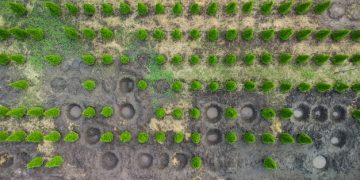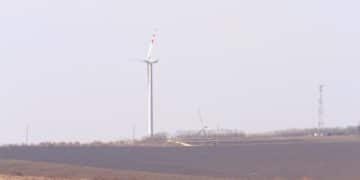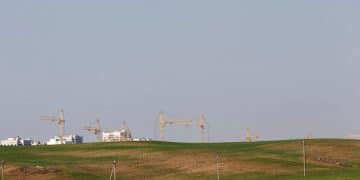Hydropower Advancements: Minimizing Environmental Impact with New Technologies
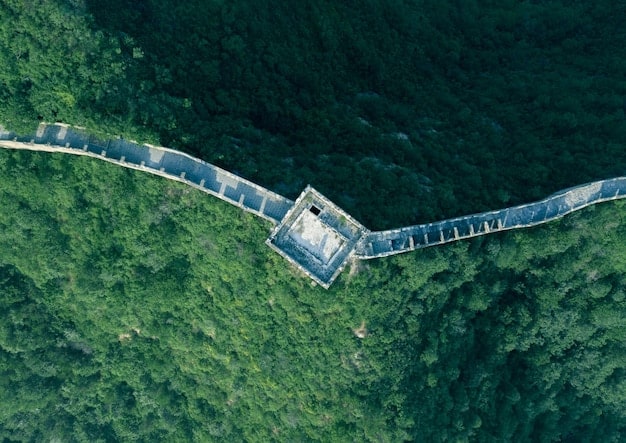
Hydropower advancements leverage cutting-edge technologies such as fish-friendly turbines, advanced monitoring systems, and optimized reservoir management to significantly reduce environmental impact and enhance sustainability.
Hydropower advancements: How new technologies are minimizing environmental impact is a critical area of focus as we strive for sustainable energy solutions, exploring how modern innovations are making hydroelectric power more environmentally friendly.
Understanding Hydropower’s Role in Renewable Energy
Hydropower remains a significant contributor to the renewable energy sector, offering a reliable and established source of electricity. However, traditional hydropower projects have faced criticism due to their environmental impacts. Modern advancements seek to mitigate these concerns.
The Evolution of Hydropower
Hydropower’s journey has seen substantial technological evolution, focusing on minimizing environmental footprint. Early designs often overlooked ecological impacts, but today’s projects prioritize sustainability.
Ongoing research and development continue to refine hydropower technologies, ensuring they align with environmental protection goals. This evolution is crucial for the long-term viability of hydropower as a renewable energy source.
- Early Hydropower: Focused primarily on energy generation with little regard for environmental consequences.
- Mid-20th Century: Increased awareness of environmental issues led to some mitigation efforts.
- Modern Hydropower: Prioritizes ecological sustainability through advanced technologies and practices.
By embracing these advancements, hydropower can play a vital role in a sustainable energy future.
Fish-Friendly Turbine Technology
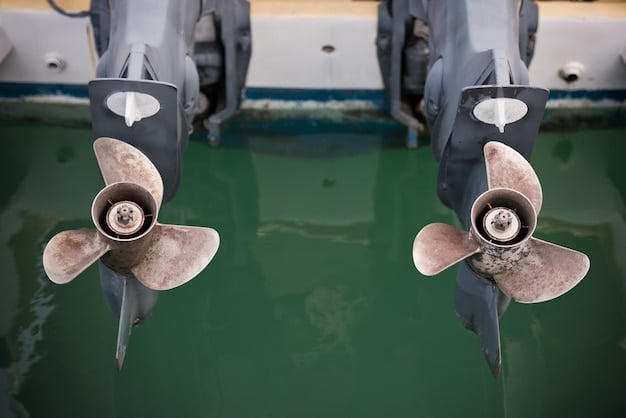
One of the most significant advancements in hydropower is the development of fish-friendly turbines. These turbines are designed to reduce the risk of injury or mortality to fish passing through hydroelectric dams.
How Fish-Friendly Turbines Work
Fish-friendly turbines utilize innovative designs to minimize stress and physical harm to aquatic life. These designs often include smoother blades, wider water passages, and reduced rotational speeds.
These turbines aim to create a safer passage for fish, ensuring that hydropower plants can coexist with healthy aquatic ecosystems. The implementation of fish-friendly turbines represents a major step forward in environmentally conscious hydropower.
- Smooth Blade Design: Reduces the risk of direct impact and injury.
- Wider Water Passages: Provides more space for fish to navigate through the turbine.
- Reduced Rotational Speed: Minimizes shear stress and turbulence.
Effective implementation of fish-friendly turbines requires careful consideration of local fish species and their behavior.
Advanced Monitoring Systems for Environmental Impact
Advanced monitoring systems play a crucial role in assessing and mitigating the environmental impact of hydropower projects. These systems provide real-time data on water quality, fish populations, and other ecological indicators.
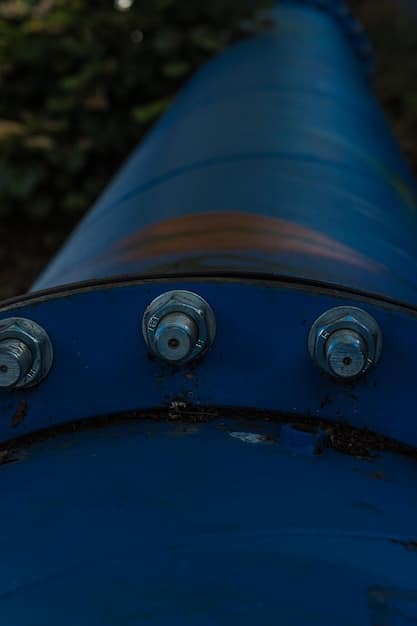
Real-Time Data Collection
These monitoring systems allow for immediate detection of any adverse effects, enabling swift corrective actions. By providing comprehensive data, they support informed decision-making and adaptive management practices.
Continuous monitoring helps ensure that hydropower operations remain environmentally responsible and sustainable. This data-driven approach is essential for balancing energy needs with ecological preservation.
- Water Quality Sensors: Monitor parameters such as temperature, dissolved oxygen, and pH levels.
- Fish Tracking: Utilizes tags and acoustic receivers to track fish movement and behavior.
- Habitat Monitoring: Assesses the health and biodiversity of aquatic ecosystems.
The insights gained from these monitoring systems are invaluable for optimizing hydropower operations and minimizing their environmental footprint.
Optimized Reservoir Management
Optimized reservoir management techniques aim to balance the needs of power generation with environmental considerations. These strategies focus on maintaining healthy river ecosystems and minimizing the impact on downstream environments.
Effective reservoir management significantly reduces the negative impacts traditionally associated with hydropower. These techniques are crucial for ensuring the long-term sustainability of hydropower projects.
Strategies for Reservoir Optimization
Implementing advanced reservoir management strategies involves careful planning and coordination. These strategies consider various factors, including seasonal water availability, ecological needs, and power demand.
- Environmental Flows: Releasing water to mimic natural flow patterns and support aquatic life.
- Sediment Management: Controlling sediment buildup to maintain reservoir capacity and downstream water quality.
- Water Level Management: Adjusting water levels to minimize impacts on shoreline habitats.
By adopting these strategies, hydropower operators can better manage reservoirs to benefit both energy production and environmental conservation.
The Role of Small Hydropower Systems
Small hydropower systems offer a more localized and environmentally friendly approach to hydropower generation. These systems typically have a smaller environmental footprint compared to large-scale dams.
The smaller scale allows for more targeted environmental mitigation efforts, making them a viable option for communities seeking renewable energy solutions. Small hydropower can provide reliable power while minimizing ecological disruption.
Benefits of Small Hydropower
Small hydropower systems offer several advantages over traditional large dams, including reduced reservoir size, lower construction costs, and minimal impact on river ecosystems.
- Lower Environmental Impact: Reduced flooding and habitat disruption.
- Community-Based Energy: Provides local power generation and energy independence.
- Cost-Effective: Lower construction and maintenance costs compared to large dams.
Small hydropower represents a sustainable and adaptable option for harnessing the power of water.
Integrating Hydropower with Other Renewables
Hydropower can be effectively integrated with other renewable energy sources, such as solar and wind, to create a more reliable and diversified energy portfolio. This integration helps address the variability often associated with renewables.
Hydropower’s dispatchability makes it an ideal complement to intermittent sources like solar and wind. This synergy enhances the overall stability and reliability of the energy grid.
Hybrid Renewable Energy Systems
Combining hydropower with other renewable sources creates hybrid systems that optimize energy production and grid stability. These systems leverage the strengths of each energy source to provide a consistent and reliable power supply.
- Solar-Hydropower: Using solar energy to pump water back into reservoirs, increasing hydropower capacity.
- Wind-Hydropower: Coordinating wind and hydropower generation to balance energy supply and demand.
- Smart Grid Integration: Utilizing advanced grid technologies to manage the flow of electricity from multiple sources.
These integrated approaches are essential for building a sustainable and resilient energy future.
| Key Point | Brief Description |
|---|---|
| 🐟 Fish-Friendly Turbines | Minimize harm to fish by using smooth blades and wider passages. |
| 📊 Advanced Monitoring | Real-time data helps manage water quality and protect ecosystems. |
| 🌊 Optimized Reservoirs | Balancing power generation with environmental flow needs. |
| ⚡ Hybrid Systems | Integrating hydropower with solar and wind for reliable energy. |
Frequently Asked Questions
▼
Fish-friendly turbines are advanced turbine designs that minimize the risk of injury or mortality to fish as they pass through hydroelectric dams. They use smoother blades and wider passages.
▼
Advanced monitoring systems provide real-time data on water quality, fish populations, and other ecological indicators. This data helps in making informed decisions for environmental management.
▼
Optimized reservoir management involves strategies to balance power generation with environmental considerations. This includes releasing environmental flows and managing sediment buildup in reservoirs.
▼
Small hydropower systems have a smaller environmental footprint compared to large dams. They provide community-based energy and cost-effective power generation with minimal habitat disruption.
▼
Hydropower can be integrated with solar and wind to create more reliable and diversified energy portfolios. This leverages the strengths of each, enhancing grid stability.
Conclusion
Advancements in hydropower technology are transforming the way we harness energy from water, paving the way for more sustainable and environmentally responsible practices. By embracing these innovations, we can ensure that hydropower continues to play a vital role in our renewable energy future.

